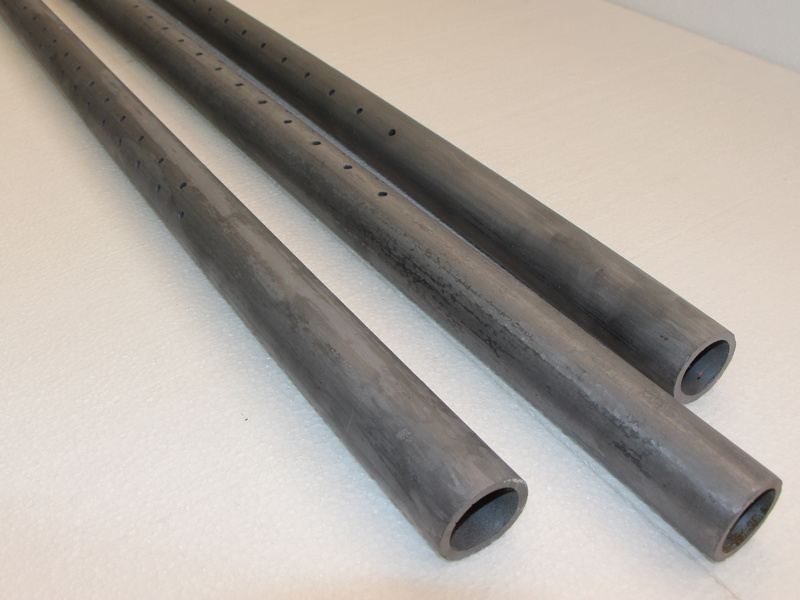What are the advantages and disadvantages of silicon carbide rods?
Release time:
2022-08-05
Silicon carbide rod What are the advantages and disadvantages?

Silicon carbide rollers are widely used in high-temperature industries and are gradually occupying a dominant position. Silicon carbide rollers and high-temperature kiln rollers are made of green silicon carbide micropowder, carbon ink, graphite powder, and a high-degree bonding agent, and are formed by infiltrating metallic silicon at a high temperature of 1700 degrees. So, what are the advantages and disadvantages of silicon carbide rods?
What are the advantages and disadvantages of silicon carbide rods?
1. Advantages: Silicon carbide rods have excellent high-temperature bending strength and oxidation resistance. They do not bend or break during long-term high-temperature use. Their thermal shock stability and high-temperature load capacity are superior to those of alumina rolls.
2. Disadvantages: Silicon carbide ceramic rods are easily corroded, have poor cleaning ability, are expensive, and have high thermal conductivity.
What is the process flow of silicon carbide rods?
1. Make green drawings according to the drawings, break down customer drawings, and make molds for silicon carbide, etc.
2. Pressing and machining silicon carbide according to the green drawings.
3. Sintering is in progress. Different sintering should be carried out according to different processes.
4. This is the finishing of silicon carbide products, which is crucial and mainly depends on the worker's skills.
Replacement Silicon carbide rod What are the precautions?
1. When replacing silicon carbide rods, it is better to stop the kiln or lower the temperature (below 800 degrees). This ensures safety and prolongs the service life of the replaced rods. No more than two rods should be broken at one time; otherwise, emergency replacement or immediate shutdown is required.
2. In actual operation, due to various reasons, it is not possible to immediately cool down the firing or stop the kiln to replace the rods, but to replace the broken rods while normal firing is in progress. At this time, a new roller (of the same model as the broken roller) should be taken out first, with refractory cotton inserted at one end of the new roller and a spring installed at the other end; then, a 400-500-degree rod is taken out, and the new rod is preheated for 20-30 minutes (one end with refractory cotton inserted into the transmission side) or a 400-500-degree high-temperature zone roller is installed in advance for replacement.
3. The length of the refractory cotton inserted into the new rod is L, which is the thickness of the kiln wall; the initial insertion depth is L1, which is the exposed part of the porcelain tube plus the thickness of the kiln wall; the final insertion depth is L1, which is the part of the porcelain tube exposed to the kiln wall. The new porcelain tube is only plugged with refractory cotton at one end of the transmission, and the other end is plugged after the refractory cotton is installed.
4. Remove the broken silicon carbide rod and temporarily plug the brick hole with refractory cotton to prevent heat leakage and cold air from entering; the porcelain tube on the transmission side needs to be removed after removing the transmission gear, or pushed into the kiln (note that the broken roller should fall below the roller surface to avoid hindering the operation of the kiln board), and cleaned after the kiln is stopped. Particular care should be taken when removing the roller to avoid breakage and burns from quenching.
5. Take out the preheated new roller and slowly insert the plugged end of the refractory cotton into the broken rod while rotating. Do not insert it too quickly; keep rotating continuously.
6. Silicon carbide rod: When the roller is inserted into the kiln wall on the transmission side, do not rush to install the transmission gear. First, simply plug the gap between the porcelain tubes with refractory cotton and continue to rotate the porcelain tube continuously. After the head of the porcelain tube on the transmission side cools to a certain temperature, install the transmission gear, and then gently install the porcelain tube into the steel sleeve to prevent the hot porcelain tube from cooling rapidly when contacting the steel sleeve and causing damage. Note that the transmission gears need to be installed vertically and horizontally, and the distance between adjacent front and rear transmission gears should be consistent.
7. After the new rod is installed, the gap between both ends of the rod and the kiln wall should be tightly filled with refractory cotton, especially the gap between the bottom of the porcelain tube and the kiln wall should be tightly filled with refractory cotton. At the same time, the end of the rod without refractory cotton should be pressed with cotton, and the depth of the cotton should refer to the requirements in point 3. Check whether the spring falls on the bearing and use a marker pen to write the replacement date and time, porcelain tube model, and porcelain tube serial number on one end of the porcelain tube.
8. In the "Broken Rod Special Record Book", record the date, time, model, quantity, broken roller position, broken roller number, the last replacement date and time of the broken roller, and the person in charge on duty.
Silicon carbide rod : Remove the broken roller for observation (roller model, fracture location, wear, thickness, density, etc.), analyze and discuss, and report to the superior for effective control and improvement measures.




